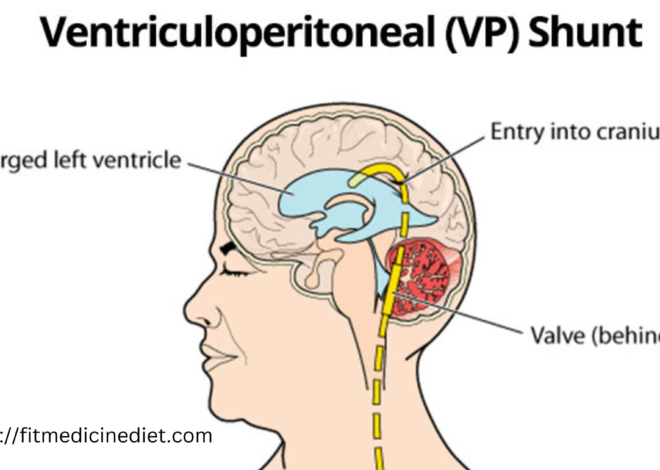
Understanding Low on alkaline phosphatase best information 2024: Causes, Implications, and Management
Introduction
low on alkaline phosphatase (ALP) is an essential enzyme present in various tissues throughout the body, with the highest concentrations found in the liver, bones, kidneys, and digestive system. It plays a crucial role in many bodily processes, including bone formation and bile secretion. ALP levels are commonly measured as part of routine blood tests to assess liver function, bone health, and other metabolic processes. While most people are familiar with the implications of high ALP levels, low on alkaline phosphatase (hypophosphatasemia) is less commonly discussed but can be equally significant. This article delves into the causes, potential health implications, and management strategies for low on alkaline phosphatase
What is low on alkaline phosphatase?
Alkaline phosphatase is an enzyme that removes phosphate groups from various molecules, including nucleotides, proteins, and alkaloids, in an alkaline environment. It is particularly important in the liver, where it plays a role in processing fats in the diet, and in bones, where it contributes to the mineralization process that hardens bones and teeth.
Normal Alkaline Phosphatase Levels
ALP levels can vary depending on age, sex, and the individual laboratory’s reference range. Generally, normal adult ALP levels range from 44 to 147 international units per liter (IU/L). However, these values can be higher in children and pregnant women due to increased bone growth and placental production of ALP, respectively.
Causes of low on alkaline phosphatase
Low alkaline phosphatase levels can be caused by a variety of factors, ranging from genetic conditions to nutritional deficiencies. Understanding these causes is crucial for proper diagnosis and treatment.
1. Hypophosphatasia
Hypophosphatasia is a rare genetic disorder characterized by low activity of the tissue-nonspecific isoenzyme of alkaline phosphatase (TNSALP). This condition can range in severity from lethal forms in infancy to mild adult forms. It results in defective bone mineralization, leading to rickets in children and osteomalacia in adults. Symptoms may include frequent fractures, premature loss of teeth, and muscle weakness.
2. Nutritional Deficiencies
Deficiencies in certain nutrients, particularly zinc and magnesium, can lead to low ALP levels. Zinc is a cofactor for the ALP enzyme, and its deficiency can impair the enzyme’s activity. Similarly, magnesium is essential for the proper function of many enzymes, including ALP. Chronic malnutrition, eating disorders, and conditions that impair nutrient absorption, such as celiac disease or Crohn’s disease, can also contribute to low ALP levels.
3. Hypothyroidism
Hypothyroidism, a condition where the thyroid gland is underactive and produces insufficient thyroid hormones, can lead to low ALP levels. The thyroid hormones play a significant role in bone metabolism and overall energy regulation. When these hormones are low, ALP production may decrease, leading to lower enzyme levels in the blood.
4. Anemia
Certain types of anemia, particularly pernicious anemia (caused by vitamin B12 deficiency), have been associated with low ALP levels. Anemia can affect bone marrow function and, in turn, reduce the production of ALP.
5. Genetic Factors
In addition to hypophosphatasia, other genetic factors can influence ALP levels. Some individuals may have naturally lower ALP levels due to genetic variations that affect enzyme production or activity. These genetic factors are often benign but can be identified through family history and genetic testing.
6. Medical Treatments
Certain medical treatments can inadvertently lower ALP levels. For instance, medications like corticosteroids, which are used to treat inflammatory conditions, can suppress bone formation and reduce ALP production. Additionally, long-term use of certain anticonvulsants and bisphosphonates, which are used to treat osteoporosis, can also lead to decreased ALP levels.
Health Implications of low on alkaline phosphatase
Low ALP levels are not as commonly associated with specific diseases as high ALP levels, but they can still have significant health implications, particularly when they are the result of underlying conditions.
1. Bone Health
One of the primary concerns with low on alkaline phosphatase levels is its impact on bone health. Since ALP is crucial for bone mineralization, low levels can lead to weakened bones, increasing the risk of fractures and bone-related disorders such as rickets in children and osteomalacia in adults. Patients with hypophosphatasia, in particular, are at a high risk of severe bone abnormalities and frequent fractures.
2. Liver Function
While low ALP levels are less commonly associated with liver disease compared to elevated levels, they can still indicate liver dysfunction in certain cases. For example ,low on alkaline phosphatase levels may be seen in individuals with Wilson’s disease, a genetic disorder that causes copper accumulation in the liver, leading to liver damage.
3. Growth and Development in Children
In children, low ALP levels can impede normal growth and development, particularly bone growth. Conditions like hypophosphatasia can result in short stature, delayed walking, and other developmental delays. Early diagnosis and management are crucial to mitigate these effects.
4. Cardiovascular Health
Some studies suggest a potential link between low ALP levels and cardiovascular health. Low ALP has been associated with an increased risk of cardiovascular disease, although the exact mechanisms are not fully understood. It is hypothesized that ALP plays a role in vascular calcification, and low levels may lead to abnormal calcification processes, contributing to cardiovascular risk.
Diagnosing low on alkaline phosphatase
Diagnosing low ALP levels typically begins with a routine blood test. If low ALP is detected, further investigations are warranted to determine the underlying cause. This may include:
- Detailed Medical History and Physical Examination: To identify symptoms of underlying conditions such as hypophosphatasia or hypothyroidism.
- Nutritional Assessment: To check for deficiencies in zinc, magnesium, and other nutrients.
- Thyroid Function Tests: To rule out or confirm hypothyroidism.
- Bone Density Scans: To assess bone health, particularly if the patient presents with symptoms of bone pain or fractures.
- Genetic Testing: In cases where a genetic disorder such as hypophosphatasia is suspected.
Management and Treatment of low on alkaline phosphatase
The treatment of low alkaline phosphatase levels focuses on addressing the underlying cause. Management strategies vary depending on the identified condition.
1. Nutritional Supplementation
If low ALP levels are due to nutritional deficiencies, supplementation is usually effective. Zinc and magnesium supplements can help restore normal ALP levels. Dietary modifications to include foods rich in these nutrients, such as nuts, seeds, whole grains, and leafy greens, are also recommended.
2. Hormone Replacement Therapy
In cases of hypothyroidism, thyroid hormone replacement therapy can help normalize ALP levels. Regular monitoring of thyroid function is essential to ensure that hormone levels are within the normal range.
3. Treatment of Underlying Medical Conditions
For conditions like hypophosphatasia, treatment may involve enzyme replacement therapy (ERT) with asfotase alfa, which can help improve bone mineralization and reduce symptoms. In the case of liver disorders such as Wilson’s disease, treatment focuses on reducing copper levels in the body, which can help normalize ALP levels.
4. Monitoring and Follow-up
Regular monitoring of low on alkaline phosphatase levels and other relevant biomarkers is crucial in managing patients with low ALP. Follow-up appointments allow healthcare providers to assess the effectiveness of treatment and make necessary adjustments.
Conclusion
low on alkaline phosphatase, while less commonly discussed than elevated levels, is an important clinical finding that can indicate a range of underlying health issues. From genetic conditions like hypophosphatasia to nutritional deficiencies and hypothyroidism, the causes of low ALP are varied and can have significant health implications, particularly for bone health. Early diagnosis and targeted treatment are key to managing low on alkaline phosphatase levels and preventing potential complications. If you have been diagnosed with low alkaline phosphatase, it is important to work closely with your healthcare provider to determine the cause and develop an appropriate treatment plan


